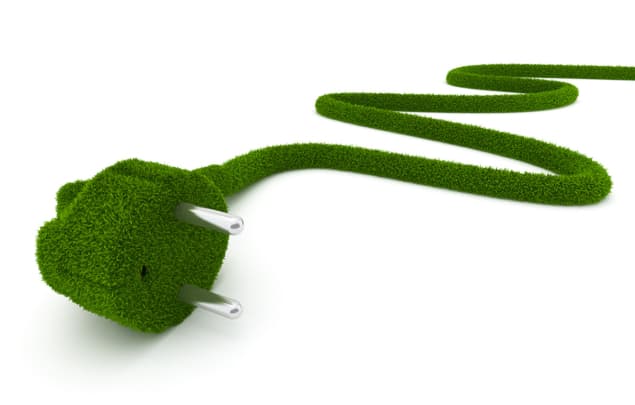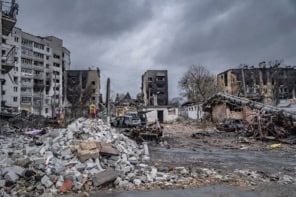
In their “Burden of Proof” paper last year in Renewable and Sustainable Energy Reviews, Benjamin Heard and colleagues presented their case against 100% renewable electricity systems. As I reported at the time, they doubted the feasibility of many of the recent scenarios for high shares of renewable energy, questioning everything from whether renewables-based systems can survive extreme weather events with low sun and low wind, to the ability to keep the grid stable with so much variable generation. None could meet the set of feasibility and reliability criteria Heard et al. adopted.
Researchers from the Karlsruhe Institute of Technology, Germany, the South African Council for Scientific and Industrial Research, Lappeenranta University of Technology in Finland, Delft University of Technology, Netherlands, and Aalborg University, Denmark, have now hit back with an analysis of hundreds of studies from across the scientific literature to answer each of the apparent issues. They claim that a shift to 100% renewables is technically feasible and economically viable.
Lead author Tom Brown of the Karlsruhe Institute, said: “While several of the issues raised by the Heard paper are important, you have to realize that there are technical solutions to all the points they raised, using today’s technology.” Christian Breyer of Lappeenranta University of Technology added “furthermore, these solutions are absolutely affordable, especially given the sinking costs of wind and solar power”. Brian Vad Mathiesen of Aalborg University commented: “There are some persistent myths that 100% renewable systems are not possible. Our contribution deals with these myths one by one, using all the latest research. Now let’s get back to the business of modelling low-cost scenarios to eliminate fossil fuels from our energy system, so we can tackle the climate and health challenges they pose.”

Jacobson’s new 100% renewables model aims to rebut critics
Looking at the technologies that can make a 100% target realistic, Brown cites the “power to gas” solution of hydrogen or synthetic gas produced with renewable electricity for the “worst case” times when imports, hydroelectric pumped storage reservoirs, batteries and other storage fail to bridge the gap during low wind and solar periods in winter. For maintaining grid stability generally, the report says there are many other technical solutions, including electronics-based solutions, and it presents examples of best practice by grid operators from across the world, from Denmark to Tasmania.
The report adds “from a feasibility point of view, even in the worst possible case that enough [conventional] dispatchable capacity were maintained to cover the peak load, this does not invalidate these [green] scenarios”, since the costs, for example, of a fleet of open-cycle gas turbines (OCGTs), would be relatively low – for example, 7.3% of Germany’s total spending on electricity. But the researchers don’t think a full OCGT fleet would be needed, given the other balancing options, though some OCGTs could be used, fed with biogas or syngas, to help maintain system inertia – or even, at times, just run unpowered to provide grid stability. The team also doesn’t see transmission as a major technical problem; smart grid management can reduce grid stresses, although some grid upgrade would be needed.
General challenge
Moving away from the specific technical areas, the report challenges some of the underlying basics of the approach adopted by Heard et al., who it says often confuse “feasibility” and “viability” in their test criteria, or at least failed to be consistent in their uses of these terms. Certainly, some options may be technically feasible, but not socioeconomically viable, and vice versa, but in reality there will be an interaction as we seek optimals and trade-offs.
Looking in detail at some of the specific “feasibility” criteria used by Heard et al., the report challenges the view that renewables will not be able to meet demand since the latter will always rise. The report suggests that, if we move from thinking about primary energy, which is not very meaningful for renewables, to “end use” energy, given the absence of the large fossil and nuclear thermodynamic conversion losses, supply can more easily match demand, even if the latter does rise. As the researchers say, “primary energy consumption automatically goes down when switching from fossil fuels to wind, solar and hydroelectricity, because they have no conversion losses according to the usual definition of primary energy; ii) living standards can be maintained while increasing energy efficiency; iii) renewables-based systems avoid the significant energy usage of mining, transporting and refining fossil fuels and uranium”.
There are technical solutions to all the points they raised, using today’s technology
Tom Brown
All in all, the report makes a strong technical case for renewables. What’s more, in terms of socio-economic viability, the new system avoids the rising economic, health and environmental costs imposed from using fossil fuels. But even ignoring the avoided climate and air quality costs, the report says, renewables will be economically viable — and cheaper than the current system.
The Heard et al. paper has also been challenged by Australian academics Mark Diesendorf and Ben Elliston, who extend their critique to a paper by Brook and Bradshaw. A core issue is reliability. Diesendorf and Elliston say that the accepted engineering approach is that “reliability is a property of the whole demand-supply system and that a perfectly reliable system is impossible – it would require infinite back-up and hence would have infinite cost”. However, they say that “Brook and Bradshaw confuse it with dispatchability of individual power stations, while Heard et al. confuse it with the presence or absence of base-load power stations in the supply system”.
Dark doldrums
Diesendorf and Elliston do nevertheless admit that there could be problems maintaining supply “during rare periods of several days when there is simultaneously very little wind and solar power over a wide geographic region”. They note that “such periods have been named Dunkelflaute (dark doldrums) in Germany”. However, they say, in most cases, “the critical periods are generally of extent 1–3 h during and around the peaks in demand”.
So the back-up that is required “only has to operate for several hours at a time”. They note that “base-load power stations are not suited to the task”, whereas demand management could help reduce/shift peaks and cheap OCGTs could fill in any gaps. The latter could also maintain supply over longer periods, when other back-up, such as from hydro reservoirs and batteries, was exhausted, for example “if the Dunkelflaute lasts for (say) one week in winter/summer”. Diesendorf and Elliston add that the OCGTs initially “may have to operate on fossil fuels, but in the longer term they can run on renewable fuels (e.g. biofuels, hydrogen, ammonia)”. So their prescription is very similar to that of the Brown et al. study described above.
For good measure, Diesendorf and Elliston also have a sideswipe at the view that “base-load power stations are essential”, noting that “several of the simulation studies achieve reliability with zero or negligible base-load capacity” with “flexible, dispatchable power stations and storage technologies, together with demand response” being needed, rather than inflexible base-load.
In my next post I will look at the base-load issue some more, and at the latest views on P2G (power-to-gas) – the idea of using renewable hydrogen for back-up, as both the above papers proposed, is looking quite good.



